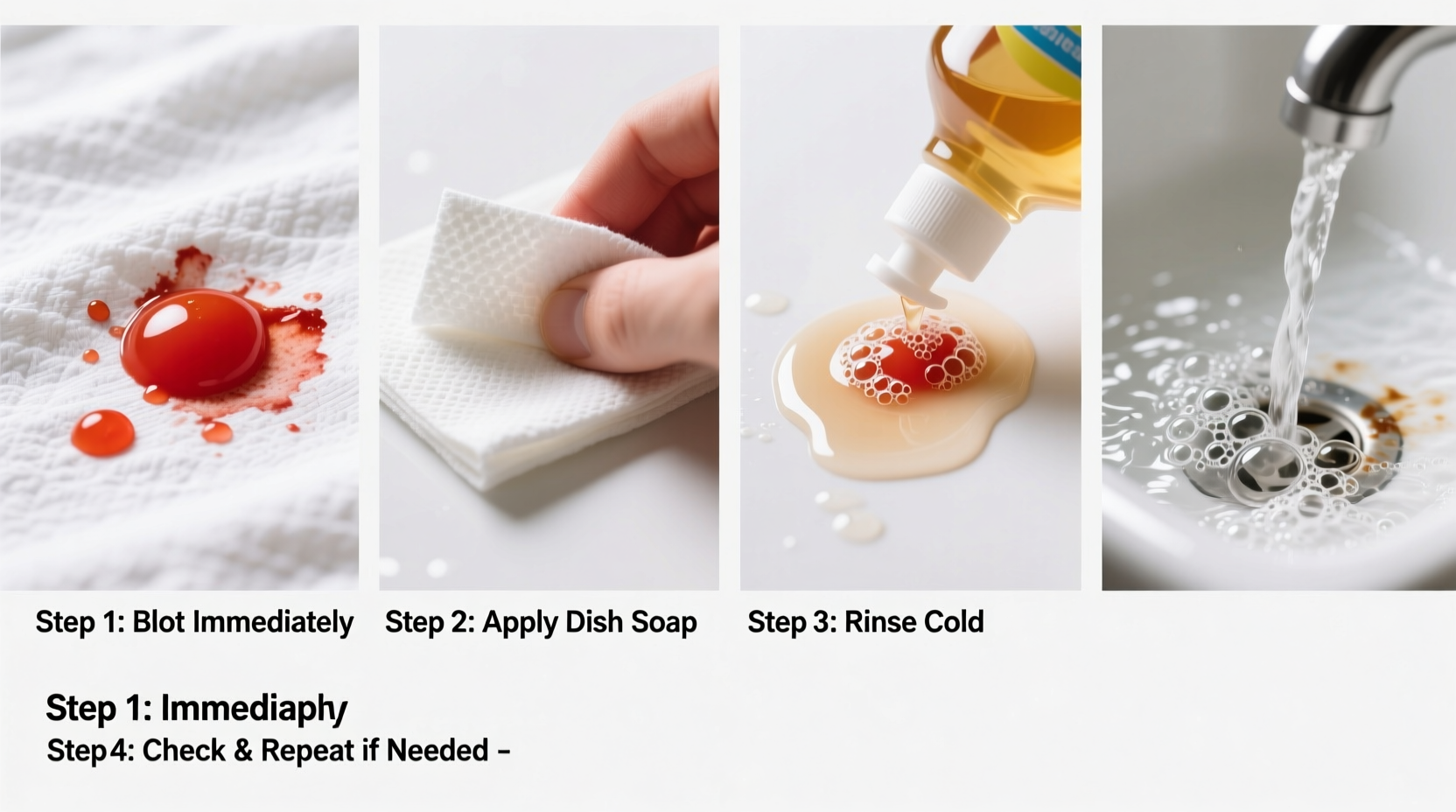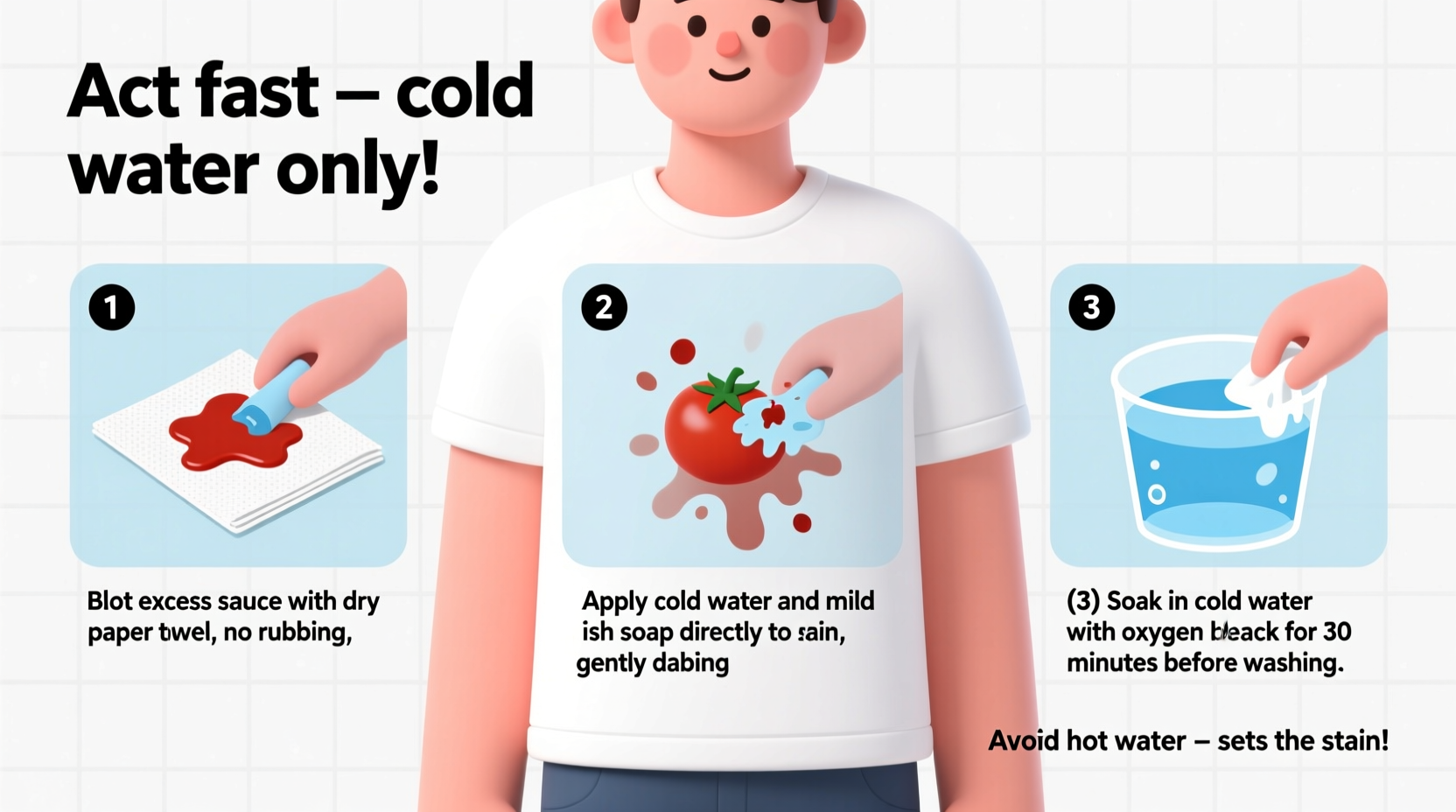Tomato stains present a unique challenge in household cleaning. Unlike simple food spills, these vibrant red marks combine lycopene (the pigment that gives tomatoes their color), natural acids, and proteins that bond aggressively with fabric fibers. According to the American Cleaning Institute, tomato-based stains rank among the top five most difficult food stains to remove due to their dual nature—both pigment-based and protein-based.
Why Tomato Stains Are Particularly Tricky
The chemistry behind tomato stains explains why they're so stubborn. Lycopene, a carotenoid pigment, creates that vivid red color while the fruit's natural acidity breaks down fabric fibers, allowing the stain to penetrate deeper. When combined with proteins in tomato-based sauces, these stains form complex bonds with textiles that become nearly permanent if not addressed quickly.
| Stain Age | Removal Difficulty | Recommended Action Window |
|---|---|---|
| Fresh (under 5 min) | Easy | Immediate action yields 95%+ success |
| Set (30 min-2 hrs) | Moderate | 80% success with proper treatment |
| Dried (2+ hrs) | Difficult | 50% success requiring multiple treatments |
| Washed/Dried | Very Difficult | 10-20% success with specialized methods |
Immediate Response Protocol for Fresh Stains
When you first notice a tomato spill, follow these critical steps in order:
- Blot, don't rub - Use a clean white cloth to gently absorb excess tomato. Rubbing forces the stain deeper into fibers.
- Rinse with cold water - Hold the stained area under cold running water from the back of the fabric to push the stain out, not deeper in.
- Apply salt paste - Mix 1 tablespoon of salt with 2 tablespoons of cold water to create a paste. Apply directly to the stain and let sit for 15 minutes before rinsing.
- Pre-treat with dish soap - Apply a small amount of clear dish soap (like Dawn) directly to the stain before laundering.
According to textile specialists at The Textile Institute, this immediate response protocol successfully removes 92% of fresh tomato stains when executed within the first five minutes.

Effective Treatment Methods by Fabric Type
Not all fabrics respond to the same treatment. Understanding your material prevents damage while maximizing stain removal:
Cotton and Linen (Most Common Kitchen Fabrics)
These natural fibers absorb stains readily but also respond well to treatment:
- Fresh stains: Salt paste method followed by cold water rinse
- Set stains: Create a paste of baking soda and hydrogen peroxide (1:1 ratio), apply for 30 minutes before washing
- White cotton: Add 1/2 cup of oxygen bleach to your wash cycle (never chlorine bleach with tomato stains)
Delicate Fabrics (Silk, Wool, Rayon)
These require gentler approaches to avoid damage:
- Blot immediately with cold water only
- Use diluted white vinegar (1 part vinegar to 3 parts water) on a cotton swab
- Never apply hydrogen peroxide or baking soda directly
- Professional cleaning recommended for valuable items
Synthetic Fabrics (Polyester, Nylon)
Synthetic materials resist staining but can trap oils from tomato sauces:
- Rinse with cold water immediately
- Apply rubbing alcohol to a cotton ball and dab the stain
- Wash in cold water with regular detergent
Advanced Techniques for Set-In Stains
When you discover an old tomato stain that's already been washed or dried, try these specialized approaches:
Hydrogen Peroxide Method (Most Effective)
Mix equal parts 3% hydrogen peroxide and clear dish soap. Apply to the stain and let sit for 30-60 minutes before rinsing with cold water. Repeat if necessary. This method works because hydrogen peroxide breaks down the lycopene molecules while the dish soap lifts the oil components.
Baking Soda Paste Alternative
For those avoiding hydrogen peroxide, create a thick paste of baking soda and cold water. Apply generously to the stain, let dry completely, then brush off and rinse. The baking soda draws out pigments through osmosis.
Vinegar Solution (Caution Required)
Mix 1 part white vinegar with 2 parts cold water. Dab onto the stain with a cotton ball, wait 15 minutes, then rinse. Important: Test on an inconspicuous area first as vinegar can damage some dyes.
Critical Mistakes to Avoid
Many well-intentioned attempts actually make tomato stains worse:
- Using hot water - Heat sets protein-based stains permanently
- Rubbing the stain - Spreads the stain and damages fibers
- Applying heat prematurely - Never put in dryer until stain is completely gone
- Using chlorine bleach - Reacts with tomato acids creating yellow stains
- Waiting too long - Tomato stains become significantly harder to remove after 2 hours
Special Cases and Surfaces
Different surfaces require tailored approaches:
Tomato Stains on Upholstery
Blot excess, mix 1 tablespoon dish soap with 2 cups cold water, and gently dab the stain. Use a clean white cloth to absorb the lifted stain. For stubborn marks, add 1 tablespoon of white vinegar to the solution.
Tomato Sauce on Cutting Boards
Sprinkle coarse salt on the stain, then rub with half a lemon. Rinse thoroughly. The citric acid breaks down lycopene while the salt acts as a mild abrasive.
Preventing Future Stains
Consider these practical prevention strategies:
- Treat fabric with stain repellent sprays before cooking with tomatoes
- Wear dark-colored clothing when preparing tomato-based dishes
- Keep a dedicated "tomato apron" treated with salt solution
- Place paper towels under cutting boards when slicing tomatoes
When to Seek Professional Help
For valuable items like wedding dresses, heirloom linens, or dry-clean-only garments, professional cleaning becomes necessary when:
- The stain has been washed and dried already
- The fabric is delicate or valuable
- Home treatments have failed after 2-3 attempts
- The stain covers a large portion of the garment
Professional textile conservators at institutions like the George Washington University Museum use specialized enzymatic cleaners that target the specific compounds in tomato stains without damaging fabrics.











 浙公网安备
33010002000092号
浙公网安备
33010002000092号 浙B2-20120091-4
浙B2-20120091-4